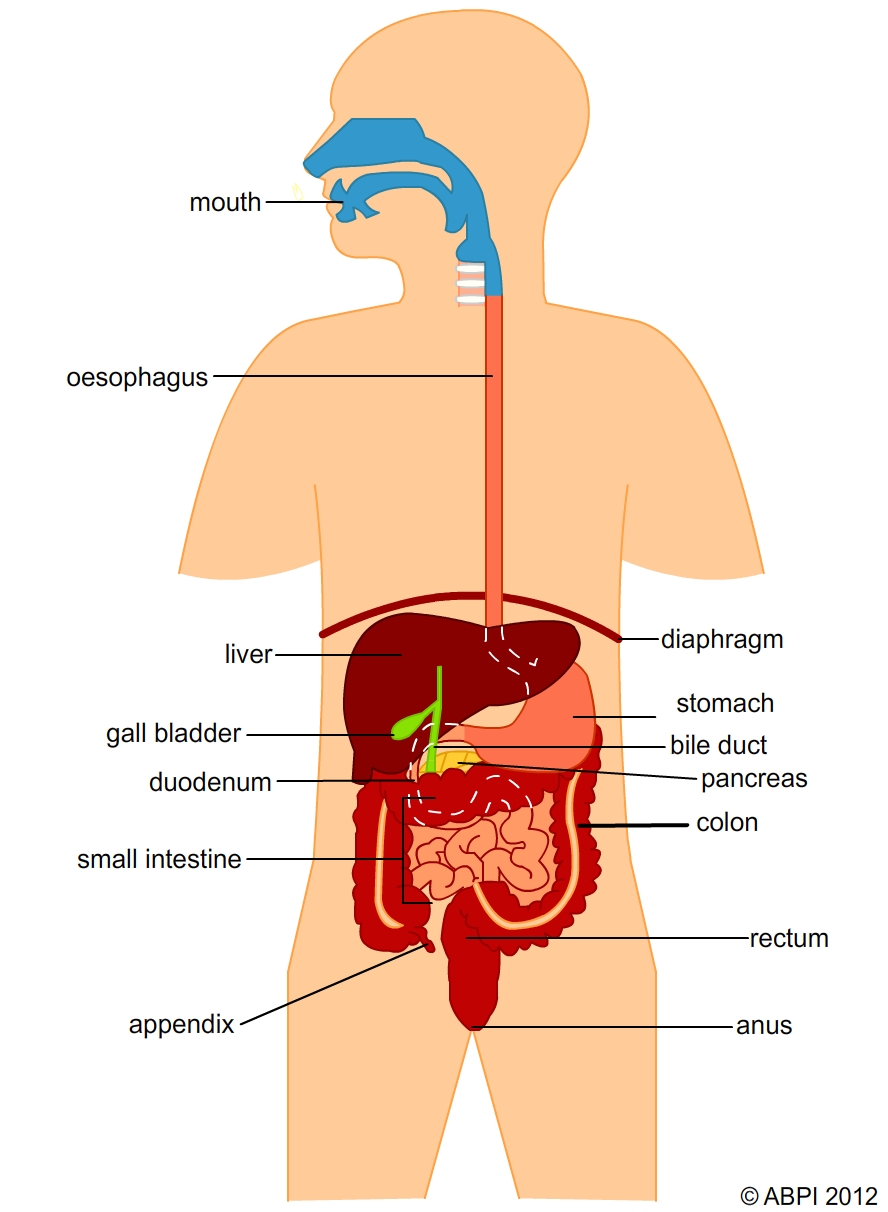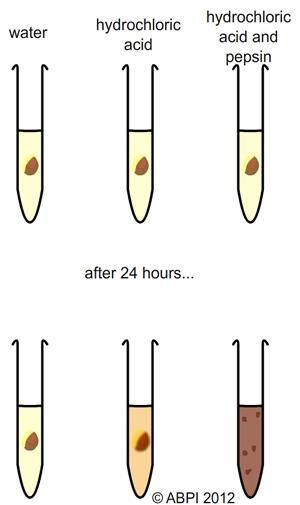This topic takes on average 55 minutes to read.
There are a number of interactive features in this resource:
 Human biology
Human biology
 Biology
Biology
 Physical education
Physical education
 PSHE / Citizenship studies
PSHE / Citizenship studies
The food you eat needs to be broken down into small soluble molecules. The whole of your digestive system works to make this happen. Enzymes speed up the breakup of molecules, and chemicals such as hydrochloric acid and bile also help.
For the digestive system to work it needs to breakdown the food as fast as possible and the soluble food molecules need to be absorbed effectively into the bloodstream so they can be carried to the cells where they are needed.
Your digestive system is a nine metre long muscular tube which runs from your mouth to your anus.
Specialised cells are organised into tissues in the different organs; for example muscle tissue to move food through the gut or glandular tissue to produce enzymes.
The inside of the tube is not really part of your body - it is part of the outside world. The food does not go into your body until it is absorbed across the lining of the small intestine.

The human digestive system
 The importance of enzymes
The importance of enzymes
When the enzyme pepsin is in a solution at the right pH, it breaks the protein in a piece of meat down into amino acids in a matter of hours.We need the energy and the chemical components of our food to be made available to the cells of our bodies quickly. The enzymes that are secreted throughout the digestive system make this possible. Without enzymes you would still be able to break down your food but it would take a very long time.
The small soluble molecules which are the result of digestion must move from inside your small intestine into your bloodstream to be any use. They do this by diffusion and some active transport.
Only a certain number of digested food molecules can diffuse into the blood over a given surface area of the intestine lining at any one time. The whole of the surface of the small intestine is covered with finger-like projections called villi which greatly increase the surface area of the small intestine. This increases the number of digested food molecules diffusing into the blood and the rate at which they diffuse.
This animation shows you the effect of folding the gut lining into 'villi' on the length of the gut. It has the same effect on the width of the gut. You can imagine how this increases the surface area available for the absorption of digested food molecules.